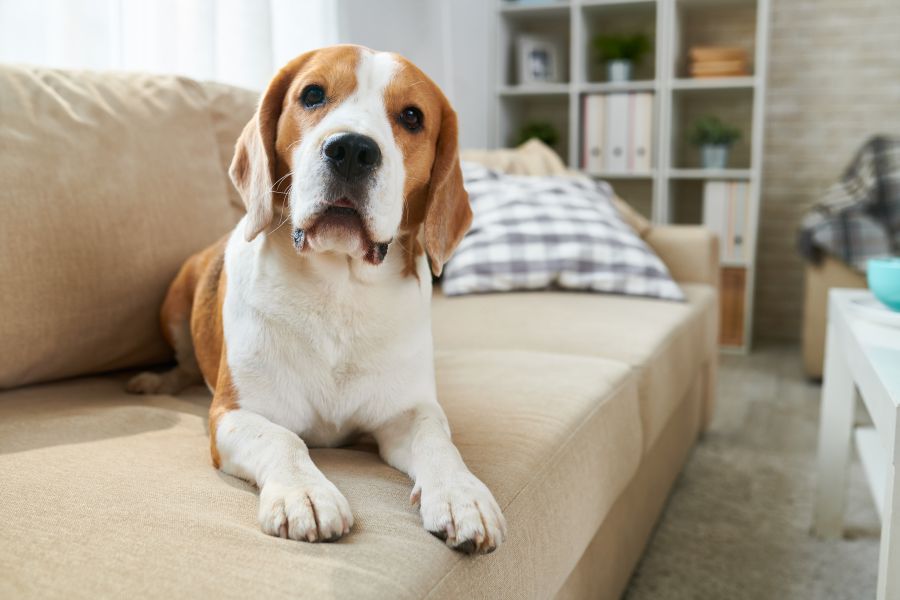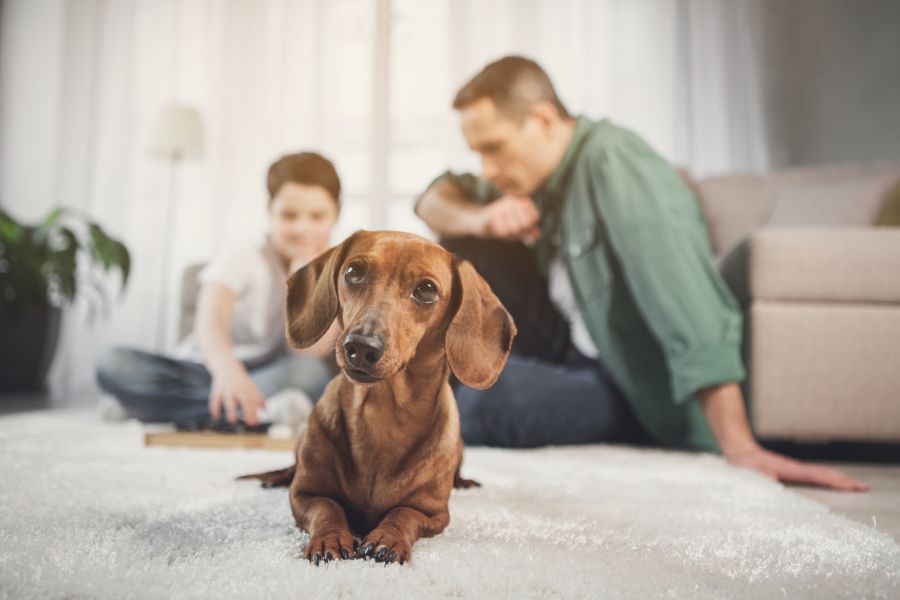Dogs aren’t only categorized based on their breed. You can also classify them based on their energy level, in which you have high-energy dogs and low-energy dogs. Most dogs are naturally energetic, athletic, and just endlessly playful.
Many kids and families love to have high-energy dogs as they can do almost anything with their owners. You can take your dog when hiking, camping, road traveling, or even swimming on the beach.
But while high-energy dogs are fun to be with, they aren’t for everyone. These dogs require lots of exercise, entertainment, and physical activities to keep them healthy and happy. So, if you think you have less time on your hands to keep up with the dog’s active and energetic lifestyle, a low-energy dog may best suit you. Unlike the high-energy ones, low-energy dogs don’t care much about doing exercises or even moving around.

In fact, some people label them as “lazy dogs,” as most of them would rather be on the couch all day. Some popular low-energy dog breeds are the pug, basset hound, Shih Tzu, dachshund, etc. But just because you have a less active dog breed doesn’t mean you’ll let them have a sedentary lifestyle. Otherwise, a sedentary lifestyle may cause your dog to be overweight, inactive, or have serious health conditions.
For your guide, here are some steps to properly care for low-energy dogs.
1. Increase Food Drive
Aside from having low energy, some less active dog breeds are also known to have a lower food drive. Considering that they’re not as active as the others, most of their energy is reserved, eventually affecting their food motivation. Despite their less-active nature, one way to increase their food drive is upgrading their meals. Focus on feeding them with foods rich in omega-3 fatty acids, protein, and B-vitamins.
These nutrients are essential for improving vital organ functions, supporting skin or coat health, and reducing joint inflammation, especially since they’re less active. You may try Abound dog food or other dog food brands that consist of these nutrients, and ensure to read their reviews first to learn how they can impact your low-energy dog’s growth and health.
Other strategies to help boost your dog’s food drive may include:
- Setting a feeding schedule
- Hand feeding
- Using toys as reinforcement
Ultimately, implementing small changes in your dog’s eating routine can increase their food drive. However, ensure you feed your dog based on their energy needs. Since you have a low-energy dog, you may feed them in smaller volumes of high-quality food. When in doubt, you can ask your vet about proper food proportioning.
2. Encourage Small Doses Of Exercises
Even if your dog has naturally low energy, it’s vital that you still encourage them to do exercises and do physical activities for a few minutes each day for optimal health. If your dog’s a couch potato, you can start small by taking them for a 5 to 10-minute walk around the neighborhood.
Make each experience pleasant by letting them walk with your other dogs or giving them treats after every exercise. The more entertaining the experience will be, the more likely your dog will happily walk with you for the following days. Once your dog’s getting the hang of it, you can try longer walk durations or change your walking venue (e.g., park, seashore, lakeside).
3. Provide Interactive Toys
You’ve probably tried throwing frisbees or balls to your dog to get their attention or encourage them to run for it. But with low-energy dogs, throwing toys won’t always be effective.
So, if you’d like to encourage your dog for some playtime, it’s best to provide them with interactive dog toys. These toys may not motivate them to chase and run around your yard, but they provide mental stimulation, which is helpful for their mental and emotional health.
Some interactive toys you can use are:
Puzzles
Puzzles can keep your dog busy even if they’re in one place. You can also hide some treats on the toy puzzles to motivate them to continue playing with their puzzles.
Tug-Of-War Toys
Playing tug with a low-energy dog can be a great mental and physical exercise for them. Furthermore, tug-of-war toys are also known to help boost your dog’s confidence. Just ensure you get a tug-of-war toy appropriate for your dog’s size.
Floating Toys
Floating toys are designed for water activities. You can use floating toys to add more fun to your dog’s experience in playing with water or during their bath time.
Stuffed Toys
There are many ways your dog can play with stuffed toys. They can either use it for cuddling, tossing, or chewing. However, avoid giving them stuffed toys with small parts or stuffing to prevent choking on them.

4. Build A Routine For Your Dog
Most dogs thrive best when they’re following a routine. When you don’t have a routine with your dog, it’ll be harder for you to motivate them to do anything other than lounging on the couch. So, create a routine for your dog and ensure you both stick to it.
Your dog’s daily routine must include:
- Feeding schedule
- Walking session (or other physical activity)
- Playtime
- Bath time or grooming session
This way, even if your dog won’t always have the best energy, their routine will serve as their guide or motivation to do other things other than lying in bed.
5. Introduce Them To Other Physical Activities
Aside from walking or playing with interactive dog toys, you can still introduce them to other physical activities that would suit their energy level best. Some activities fit for low-energy dogs may include:
- Playdates or meetups with your friends, family, and their dogs
- Car rides
- Bike rides (your bike should have a proper seat for your dog)
- Doggie massages
- Play hide-and-seek
Most of these activities may not require much physical energy, but they can provide mental stimulation, which is good for their holistic health.
6. Encourage Socialization
Most dogs, including low-energy dogs, become active when surrounded by dogs like themselves. So, take your dog out for socialization and arrange for them to have a play date with other low-energy dogs. This will motivate your dog to move and sniff around out of curiosity about the new dog and environment.
Key Takeaway
Low-energy dogs are just as fun to be around, so don’t be discouraged if they’re not as hyper or active as the others. In fact, many people prefer low-energy dogs as they don’t require much effort and time for exercise. However, it’s still essential that you make time for your dog’s needs, including playtime and exercises, to ensure they stay healthy and happy.
Most importantly, be patient in finding out which food or exercises work best for your dog’s energy level. If your dog is more passive and less energetic than usual, don’t hesitate to consult a vet right away for a proper diagnosis.
